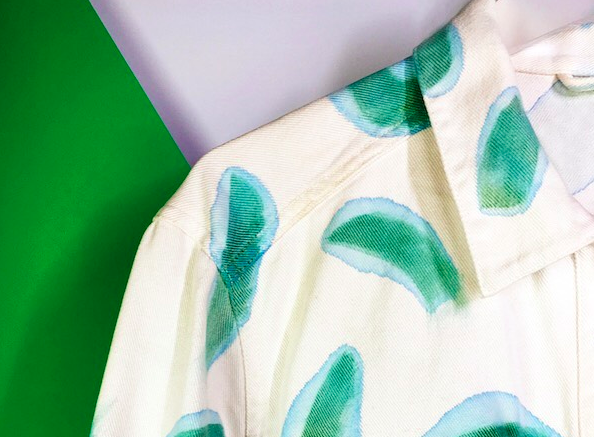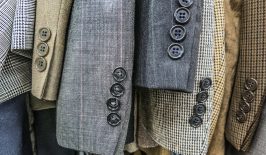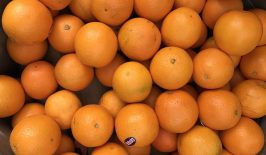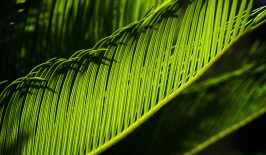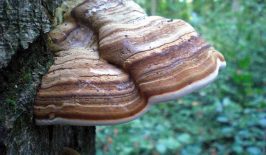The impact of fast fashion on the environment has increasingly been criticised in recent years, with long supply chains, oil-based materials and poor working conditions all coming under scrutiny. Now, a British design lab has come up with an innovative approach to reducing the impact of clothing on the environment – in a very direct way.
Post Carbon Lab (PCL) has developed a method of coating clothing with algae, which essentially allows the clothes to function as living, breathing organisms, literally allowing the wearer to reduce their carbon footprint with every step. The project, entitled ‘Post Carbon Fashion’, forms part of the lab’s ‘Regenerative Sustainability Activism’ approach, which takes aim at many of the issues with the clothing industry. Post Carbon Lab co-founder Dian-Jen Lin told RESET:
“Ecologically speaking, fashion alone accounts for 10% of humanity’s carbon emissions and 20% of global water pollution. Socially speaking, modern slavery, cultural appropriation and systematic exploitation of marginalised communities. Really, it is a far too problematic industry to be operating without many regulations.”
During the production stage, clothes are coated in a layer of algae which grows and lives on the surface of the fabric. Once grown, the organisms then engage in their normal life cycles, taking in carbon dioxide and producing oxygen. Dian-Jen Lin continues:
It’s simply photosynthesis as we know it: it absorbs carbon dioxide and converts the carbon into glucose or other products and emits oxygen as a waste product. Ideally, as users exhale carbon dioxide as a waste product, they can form a symbiotic relationship with the treated textile products, similar to a domestic air plant.
According to Post Carbon Lab, a single t-shirt – around one metre square of material – can produce as much oxygen as a young tree, although this will vary on local environmental factors. However, one benefit of the algae is it can be matured at a much quicker rate. The algae layer can also be applied as a general coating or as a print, meaning it is versatile enough to be used on a range of clothing and other fabric items, such as backpacks, pillows, umbrellas, shoes, curtains and potentially even canopies of buildings.
However, the Post Carbon Fashion garments are not exactly the type of clothing you can leave bunched up in a pile for days on end. Like any living being, the algae requires care and attention, including daily watering and handwashing in a neutral pH detergent. The clothes also cannot be kept in a dark place, such as a wardrobe, but needs frequent access to sunlight and clean air. This important requirement means you’re unlikely to see Post Carbon Lab algae being used on the clothes of some of the largest fast fashion prooducers, who favour low costs and convienience for their consumers. But this is also part of the plan.
Post Carbon Lab aims to work with small- and medium-sized enterprises in various collaborations which can make their “living clothes” more accessible to the public. However, they are also eager to avoid adding to the carbon footprint of the production process, and are mainly focusing on local markets initially. Furthermore, like any other plant, the algae will let you know if it’s suffering, and will change colour if it’s in urgent need of some restorative care. Accoridng to Post Carbon Lab’s research, their clothing, with a photosynthetic layer, could be wearable for years.
Recently, Post Carbon Lab teamed up with French car manufacturer DS Automobiles and local clothing label EgonLab to produce a range of clothing promoting the concept alongside promotion for a DS electric car. The ‘capsule collection’ debuted at the Paris Fashion Week and included a bomber jacket, trench coat and two t-shirts. The line took around 7 to 10 weeks to produce, with much of that time going towards growing and maturing the algae. During this period, Post Carbon Lab claims the clothing absorbed 1.45 kilograms of carbon – an amount which would take an oak tree around half a year to sequester.
Overall, the concept is still is the prototype phase, and the team is still experimenting with ramping up production. Indeed, it is quite possible that, eventually, such living photosynthetic layers could be used on a larger scale, like awnings and canopies. Dian-Jen Lin explained:
We are still piloting to explore more possibilities. There are still multiple challenges that we face to be able to scale up for larger productions. However, interests from various industries within the textile sector have been overwhelming. We are expecting to expand the range of applications by piloting with multiple industry partners to fully understand the potential of this technology.
